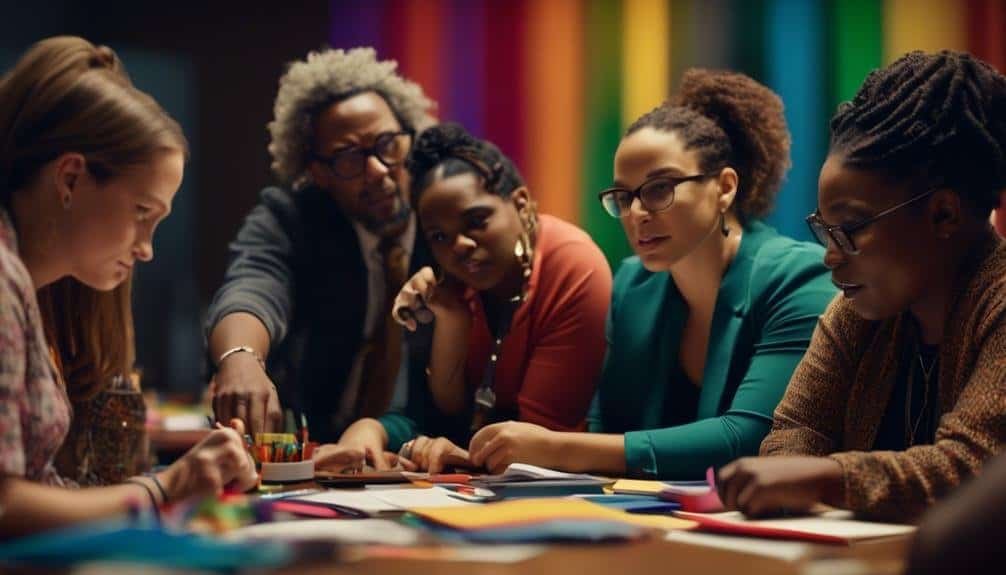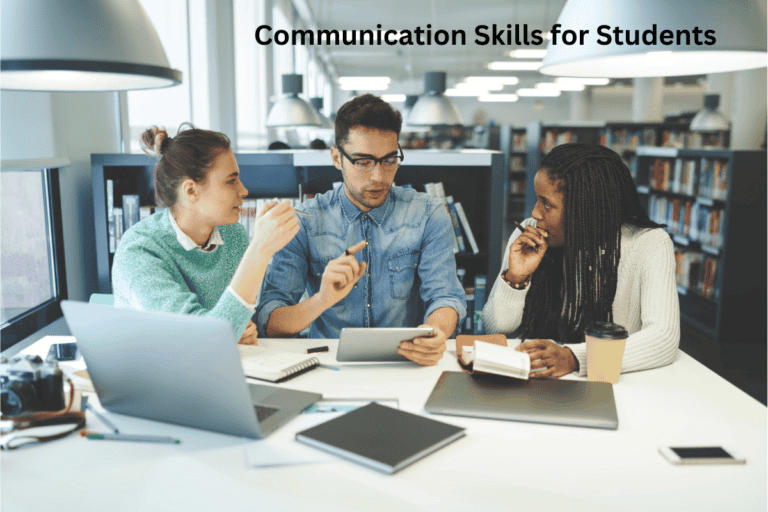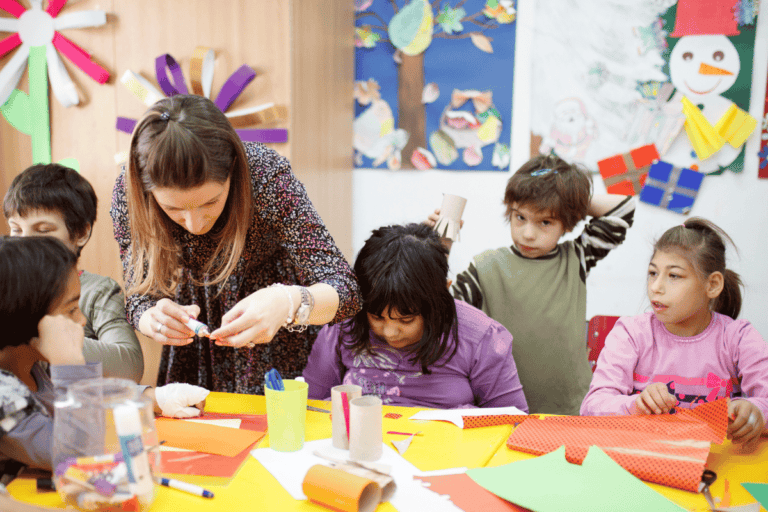Curriculum Development and Assessment Techniques for Educators
You may be thinking that curriculum development and assessment techniques are only relevant for educational experts or administrators, but that couldn't be further from the truth. As an educator, these skills are essential for creating meaningful learning experiences and ensuring student success.
By understanding the principles of backward design, identifying clear learning objectives, and selecting relevant content and resources, you can design engaging lessons that meet the needs of your students.
But it doesn't stop there. Incorporating differentiated instruction, implementing formative and summative assessments, and analyzing data for instructional adjustments are all crucial steps in the curriculum development process.
So, if you're ready to take your teaching to the next level and make a lasting impact on your students' education, keep reading to discover the key strategies and techniques that will help you excel in this important aspect of your role as an educator.
Key Takeaways
- Backward design approach focuses on identifying desired learning outcomes and working backward to develop curriculum and assessment techniques.
- Effective content curation ensures alignment with curriculum objectives, caters to different learning styles, and provides diverse learning opportunities.
- Designing engaging learning experiences through interactive lesson plans, gamification, project-based learning, technology integration, and cooperative learning promotes active participation and deeper understanding.
- Continuous improvement in curriculum design involves gathering and analyzing data, making informed decisions based on data analysis, and incorporating feedback from students and colleagues for optimal student learning outcomes.
Understanding Backward Design
To truly grasp the concept of backward design, you must first delve into its innovative approach to curriculum development and assessment techniques. Understanding outcomes and assessment techniques are key components of this approach. Backward design starts with identifying the desired learning outcomes or goals and then works backward to determine the necessary instructional strategies and assessments to achieve those goals.
In traditional curriculum development, the focus is often on what content should be taught rather than what students should be able to understand and do as a result of the instruction. Backward design shifts the focus to the desired outcomes, ensuring that instruction and assessment are aligned with those outcomes. This approach helps educators to be more intentional in their planning and to prioritize essential concepts and skills.
Assessment techniques play a crucial role in backward design. They're used to gather evidence of student understanding and to determine whether the desired outcomes have been achieved. By aligning assessments with the identified learning outcomes, educators can ensure that they're measuring what truly matters. This allows for more meaningful feedback and supports informed decision-making about instruction.
Identifying Learning Objectives
Identifying learning objectives is a critical step in curriculum development, requiring educators to thoughtfully analyze and define the specific knowledge, skills, and abilities students should acquire through instruction. This process involves aligning objectives with the desired outcomes and assessing progress along the way.
Here are four key considerations for identifying learning objectives:
- Clarity: Clearly define what students should know and be able to do at the end of a lesson or course. Use specific and measurable language to ensure that objectives are well-defined and achievable.
- Relevance: Ensure that learning objectives are relevant to students' needs and future goals. Consider their interests, prior knowledge, and real-world applications to create meaningful learning experiences.
- Progression: Design objectives that build upon each other, allowing students to develop a strong foundation before moving on to more complex concepts. This ensures a logical progression of learning and helps students see the connections between different topics.
- Assessability: Establish clear criteria and assessment methods to evaluate students' progress towards the objectives. This allows educators to track individual and overall achievement, providing feedback and identifying areas for improvement.
Selecting Relevant Content and Resources
When selecting relevant content and resources, you need to employ effective content curation techniques and resource evaluation strategies.
This involves carefully curating a collection of materials that align with your learning objectives and are suitable for your students' needs.
Content Curation Techniques
By utilizing effective content curation techniques, educators can strategically select and compile relevant resources to enhance student learning experiences.
This process involves carefully curating a variety of materials, such as articles, videos, interactive websites, and multimedia presentations, to provide students with a diverse range of learning opportunities.
With content curation, educators can ensure that the resources chosen align with the curriculum objectives and cater to different learning styles.
By incorporating interactive learning materials, educators can foster student engagement and encourage active participation in the learning process.
Additionally, content curation allows educators to stay updated with the latest research, trends, and technologies in their respective fields, ensuring that the content is current and relevant.
Through these techniques, educators can create a dynamic and engaging learning environment that promotes student growth and success.
Resource Evaluation Strategies
To effectively select relevant content and resources for your curriculum, educators must employ resource evaluation strategies that ensure alignment with curriculum objectives and cater to diverse learning styles.
Resource evaluation involves the careful assessment of various materials and sources to determine their suitability for instructional purposes. By using evaluation criteria such as accuracy, relevance, and credibility, educators can make informed decisions about the resources they include in their curriculum.
Additionally, information literacy plays a crucial role in this process, as educators need to be able to critically analyze and evaluate the resources they come across. This includes assessing the authority and expertise of the creators of the content, as well as considering the biases and perspectives that may be present.
Designing Engaging Learning Experiences
To design engaging learning experiences, you can incorporate interactive lesson plans that encourage active participation and collaboration among students.
By using gamification in education, you can introduce elements of competition, rewards, and challenges to make learning more enjoyable and motivating.
Additionally, project-based learning approaches provide students with real-world scenarios and hands-on activities, fostering critical thinking, problem-solving, and creativity.
Interactive Lesson Plans
Designing engaging learning experiences through interactive lesson plans is a crucial aspect of curriculum development and assessment techniques for educators. By incorporating technology integration and cooperative learning into your lesson plans, you can create a dynamic and interactive classroom environment that promotes student engagement and achievement.
- Technology integration: Utilize educational apps, online resources, and interactive multimedia tools to enhance the learning experience. This allows students to actively participate in their own learning and explore concepts in a more interactive and engaging way.
- Cooperative learning: Encourage collaboration among students through group activities, discussions, and projects. This fosters a sense of teamwork and helps students develop important social and communication skills while also promoting a deeper understanding of the subject matter.
- Hands-on activities: Incorporate hands-on experiments, simulations, and real-world applications to make the learning experience more tangible and relevant. This allows students to apply their knowledge and skills in practical ways, making the learning process more engaging and meaningful.
- Gamification: Introduce elements of gamification into your lesson plans by incorporating game-based activities, competitions, and rewards. This not only makes learning more fun and exciting but also motivates students to actively participate and strive for success.
Gamification in Education
Incorporating gamification into the educational setting revolutionizes the way students engage in learning, creating dynamic and immersive experiences that foster active participation and a thirst for knowledge. Gamification implementation involves the use of game design elements and mechanics in non-game contexts, such as classrooms, to enhance student motivation and engagement. By integrating elements like leaderboards, achievements, and rewards into educational activities, educators can tap into students' natural inclination for competition and challenge, making learning more enjoyable and meaningful. This approach also allows for personalized learning experiences, as students can progress at their own pace and receive instant feedback on their performance. Additionally, gamification encourages collaboration and teamwork, as students can engage in friendly competition and cooperation with their peers. The following table highlights some key benefits of gamification in education:
| Benefits of Gamification in Education |
|---|
| Increases student motivation and engagement |
| Promotes active learning and participation |
| Enhances personalized learning experiences |
| Encourages collaboration and teamwork |
| Provides instant feedback and progress tracking |
Project-Based Learning Approaches
By embracing project-based learning approaches, educators can create dynamic and immersive learning experiences that build upon the gamification techniques discussed earlier, fostering active participation and a deep understanding of the subject matter.
Here are four reasons why project-based learning is an effective method for student engagement and authentic assessment:
- Real-world relevance: Projects allow students to apply their learning to authentic, meaningful tasks, making the content more relatable and applicable to their lives.
- Collaboration and teamwork: Working on projects requires students to collaborate, communicate, and problem-solve together, fostering important skills for the future.
- Ownership and autonomy: Projects give students the freedom to make choices, take ownership of their learning, and pursue their interests, increasing motivation and engagement.
- Multidisciplinary learning: Projects often integrate multiple subject areas, enabling students to see the connections between different disciplines and develop a holistic understanding of the topic.
Incorporating Differentiated Instruction
Enhance your curriculum and instructional practices by integrating personalized teaching methods to meet the diverse needs of your students. Incorporating differentiated instruction is a powerful approach that allows educators to adapt instruction to individual students' learning styles, abilities, and interests. It promotes personalized learning, ensuring that each student is challenged and supported at their own pace.
Adapting instruction involves tailoring teaching strategies, content, and assessment methods to cater to the unique needs of each student. By using various instructional techniques such as flexible grouping, tiered assignments, and learning centers, educators can provide targeted support and extension activities based on students' abilities. This approach not only encourages engagement and motivation, but also fosters a positive learning environment where every student feels valued and successful.
Personalized learning is at the core of differentiated instruction. It recognizes that students come from diverse backgrounds and have different learning preferences. By incorporating students' interests, strengths, and weaknesses into the curriculum, educators can create meaningful learning experiences that resonate with each student. This approach also helps students develop important skills such as self-regulation, critical thinking, and problem-solving, preparing them for success beyond the classroom.
Implementing Formative Assessments
To effectively gauge student progress and tailor instruction, educators must implement formative assessments that enable ongoing evaluation and adjustment of instructional strategies. These assessment techniques provide valuable insights into students' understanding, allowing educators to identify areas of strength and areas that need improvement.
Here are four effective ways to implement formative assessments and utilize feedback strategies:
- Exit Tickets: At the end of a class or lesson, have students answer a few questions related to the content covered. This provides immediate feedback on their comprehension and helps identify any misconceptions.
- Think-Pair-Share: Encourage students to think independently about a question or problem, then pair up with a classmate to discuss and share their ideas. This promotes collaboration and allows students to hear different perspectives.
- Classroom Observations: Take the time to observe students during activities and discussions. This allows you to assess their understanding and engagement levels, providing valuable feedback on their progress.
- Quizzes and Quick Checks: Incorporate short quizzes and quick checks throughout the learning process. This helps students and educators assess understanding, identify gaps in knowledge, and adjust instruction accordingly.
Utilizing Summative Assessments
Incorporating a variety of assessment methods allows you, as an educator, to accurately evaluate student learning and measure overall achievement. While formative assessments provide ongoing feedback and help guide instruction, summative assessments serve as a final evaluation of student performance at the end of a unit or course. Summative assessments can take many forms, but two commonly used methods are authentic assessment and performance tasks.
Authentic assessment involves creating tasks that mirror real-world scenarios and require students to demonstrate their understanding and skills in a meaningful context. This type of assessment allows students to apply what they have learned in a practical and authentic manner. For example, instead of giving a traditional multiple-choice exam on a historical event, you could ask students to create a multimedia presentation or write a persuasive essay arguing the significance of that event in history.
Performance tasks, on the other hand, assess students' ability to perform specific skills or tasks. These tasks can range from conducting a science experiment to delivering a speech or solving a complex math problem. By engaging in hands-on activities and demonstrating their abilities, students are able to showcase their knowledge and skills in a more comprehensive way.
Incorporating authentic assessment and performance tasks into your summative assessments can provide a more accurate and holistic measure of student achievement. It allows you to assess not only what students know, but also how well they can apply that knowledge in real-life situations. This approach to assessment encourages critical thinking, problem-solving, and creativity, which are essential skills for success in the 21st century. By using these methods, you can ensure that your assessments are meaningful, relevant, and engaging for your students.
| Assessment Method | Description | Benefits |
|---|---|---|
| Authentic Assessment | Tasks that mirror real-world scenarios and require students to apply their knowledge in a practical and authentic manner. | Encourages critical thinking, problem-solving, and creativity. Provides a more accurate measure of student achievement. |
| Performance Tasks | Assess students' ability to perform specific skills or tasks. Tasks can range from conducting experiments to delivering speeches. | Allows students to showcase their knowledge and skills in a comprehensive way. Provides a more holistic measure of student achievement. Encourages hands-on learning and engagement. |
Analyzing Data for Instructional Adjustments
Once you have gathered the data from the authentic assessments and performance tasks, it's crucial to analyze it in order to make informed instructional adjustments for your students. Data analysis allows you to gain valuable insights into your students' strengths and weaknesses, enabling you to tailor your teaching to meet their specific needs.
Here are four key steps to guide you in analyzing data for instructional adjustments:
- Organize the data: Start by organizing the data you have collected, whether it's in the form of test scores, observations, or student work samples. Categorize the data based on different criteria, such as content areas or skill levels.
- Identify patterns and trends: Look for patterns and trends in the data. Are there common misconceptions or areas where students are excelling? Identify any gaps in knowledge or skills that need to be addressed.
- Compare data to instructional goals: Compare the data to your instructional goals and objectives. Are your students meeting the desired outcomes? Are there any misalignments between what you have taught and what they've learned?
- Make instructional adjustments: Based on your data analysis, make informed instructional adjustments. This could involve modifying your teaching strategies, providing additional support or enrichment activities, or reteaching certain concepts.
Reflecting and Iterating on Curriculum Design
Reflecting on the effectiveness of your curriculum design is essential for continuous improvement and ensuring optimal student learning outcomes. By engaging in reflective practice, you can identify areas that need improvement and make necessary adjustments to enhance the learning experience for your students.
One of the key aspects of reflective practice is to critically analyze the outcomes of your curriculum design. This involves examining student performance data, collecting feedback from students and colleagues, and evaluating the effectiveness of instructional strategies used. By doing so, you can gain insights into what worked well and what needs to be modified.
Continuous improvement is the driving force behind reflecting and iterating on curriculum design. It involves a systematic and ongoing process of making adjustments based on feedback and evidence. This can include revising lesson plans, incorporating new teaching strategies, or reorganizing the curriculum structure.
To effectively reflect and iterate on curriculum design, it's important to gather and analyze relevant data. This can be done through student assessments, classroom observations, and student feedback surveys. By analyzing this data, you can identify patterns and trends, pinpoint areas of improvement, and make informed decisions for curriculum enhancements.
Conclusion
As you reflect on the journey of curriculum development and assessment techniques, you can't help but feel a sense of excitement and anticipation.
The path you have embarked on is filled with endless possibilities and discoveries. With each step, you uncover new ways to engage and inspire your students, while constantly refining and adjusting your approach.
The thrill of seeing the impact of your efforts, the growth of your students, and the transformation of education is what keeps you eagerly moving forward, ready to embrace the future of teaching and learning.







